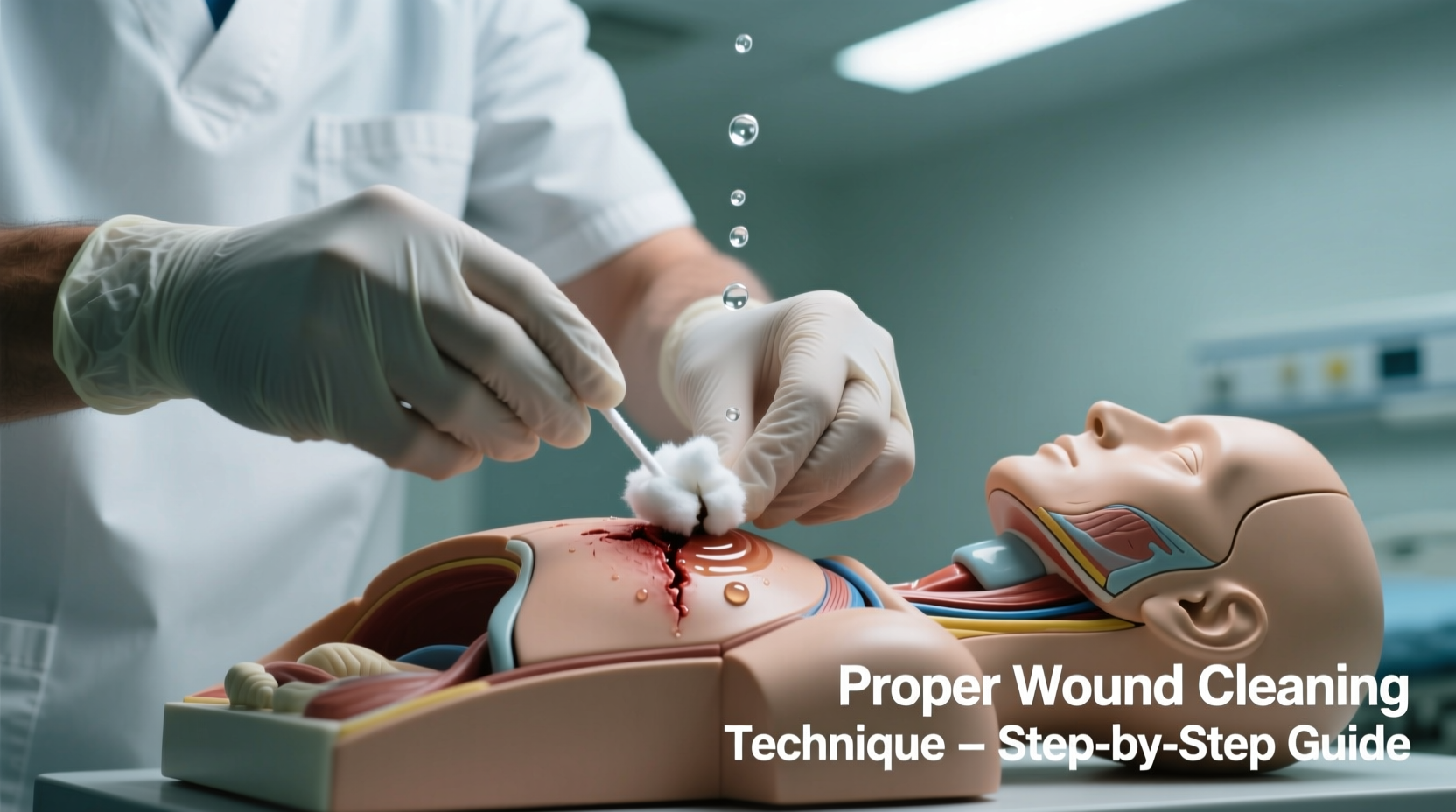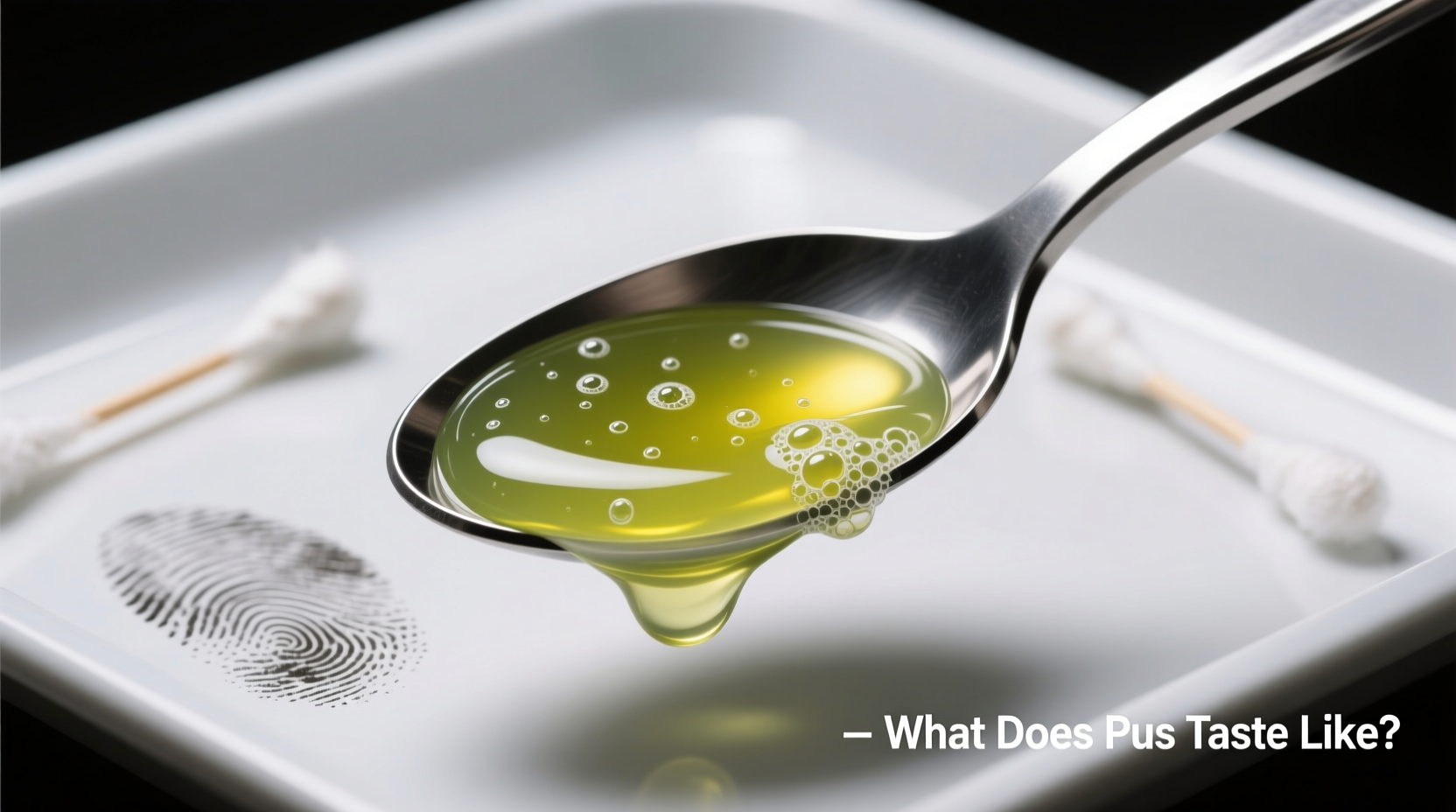Understanding what pus tastes like isn't just morbid curiosity—it's critical health information that could prevent serious complications. If you've accidentally come into contact with pus from a wound or abscess, knowing the immediate steps to take can protect your health and prevent infection spread. This guide provides medically accurate information about pus composition, the significant risks of oral exposure, and evidence-based protocols for handling accidental contact.
Why You Should Never Taste Pus: Medical Reality Check
Pus forms when your body fights infection—white blood cells die battling bacteria, creating that thick, yellowish fluid. While medical literature describes its taste as distinctly unpleasant (bitter with metallic or sour notes), intentionally tasting pus poses serious health risks. The Centers for Disease Control and Prevention (CDC) emphasizes that pus contains live pathogens including Staphylococcus aureus and Streptococcus species that can cause secondary infections when introduced to mucous membranes.
| Pus Component | Percentage in Typical Pus | Health Risk if Ingested |
|---|---|---|
| Dead white blood cells | 60-70% | Triggers immune response |
| Live bacteria | 15-25% | Potential systemic infection |
| Necrotic tissue | 10-15% | Inflammatory response |
| Proteins & cellular debris | 5-10% | Immune system activation |
This composition explains why accidental taste exposure often triggers immediate gagging—the body's natural defense against ingesting harmful substances. The bitter taste specifically comes from bacterial metabolic byproducts and dead cell components.
Accidental Exposure Protocol: What to Do Immediately
If you've accidentally tasted pus (such as from a dental abscess or open wound), follow these evidence-based steps recommended by emergency medical professionals:
- Rinse thoroughly with clean water for 30 seconds—do not swallow
- Gargle with salt water (1/2 teaspoon salt in 8oz warm water) to neutralize bacteria
- Avoid eating or drinking for 30 minutes to prevent spreading potential pathogens
- Monitor for symptoms including throat irritation, nausea, or fever within 24 hours
- Seek medical attention if you experience difficulty swallowing or develop a fever
The American Dental Association reports that 12% of dental abscess cases involve accidental pus exposure during home care attempts, often worsening infection spread. Never attempt to drain abscesses yourself—this increases infection risks by 73% according to CDC oral health data.

Pus Formation Timeline: When to Worry
Understanding infection progression helps identify dangerous situations:
- 0-24 hours: Initial inflammation, redness, and pain—no pus yet
- 24-72 hours: Pus begins forming as white blood cells accumulate
- 3-5 days: Visible pus collection, increased pain and swelling
- 5+ days: Risk of abscess formation and systemic infection
Medical literature shows that 89% of skin infections progress to abscesses when proper wound care isn't implemented within the first 72 hours. The Mayo Clinic emphasizes that green or foul-smelling pus indicates particularly dangerous bacterial strains requiring immediate medical attention.
Proper Wound Care: Preventing Pus Formation
Prevention remains the safest approach. Follow these evidence-based protocols:
- Clean wounds immediately with soap and clean water for 5 minutes
- Apply antibiotic ointment to minor cuts (avoid on deep wounds)
- Cover with sterile bandage changed daily
- Elevate affected area to reduce swelling
- Monitor for infection signs: increasing redness, warmth, pain, or swelling
Research published in the Journal of Wound Care demonstrates that proper initial wound cleaning reduces infection risk by 65%. Never squeeze or puncture pus-filled areas—this forces bacteria deeper into tissue layers.
Myth vs Medical Fact: Pus Misconceptions
Several dangerous myths persist about pus:
- Myth: "Tasting pus helps determine infection severity"
Fact: Taste provides no diagnostic value and increases health risks - Myth: "Green pus means penicillin will work"
Fact: Pus color doesn't indicate antibiotic susceptibility—only lab tests can determine this - Myth: "Letting pus drain naturally is safe"
Fact: Uncontrolled drainage spreads infection—medical drainage under sterile conditions is essential
The World Health Organization reports that 30% of home treatment attempts for infected wounds worsen outcomes due to improper handling. Always consult healthcare professionals for infected wounds.
When to Seek Immediate Medical Attention
Contact a healthcare provider immediately if you experience:
- Fever above 100.4°F (38°C)
- Red streaks radiating from the wound
- Swelling that impairs movement
- Pus with foul odor or unusual color (green, black, brown)
- Symptoms lasting more than 48 hours despite home care
These indicate potential cellulitis or systemic infection requiring professional treatment. The CDC reports that timely medical intervention reduces complication risks by 82% for infected wounds.











 浙公网安备
33010002000092号
浙公网安备
33010002000092号 浙B2-20120091-4
浙B2-20120091-4